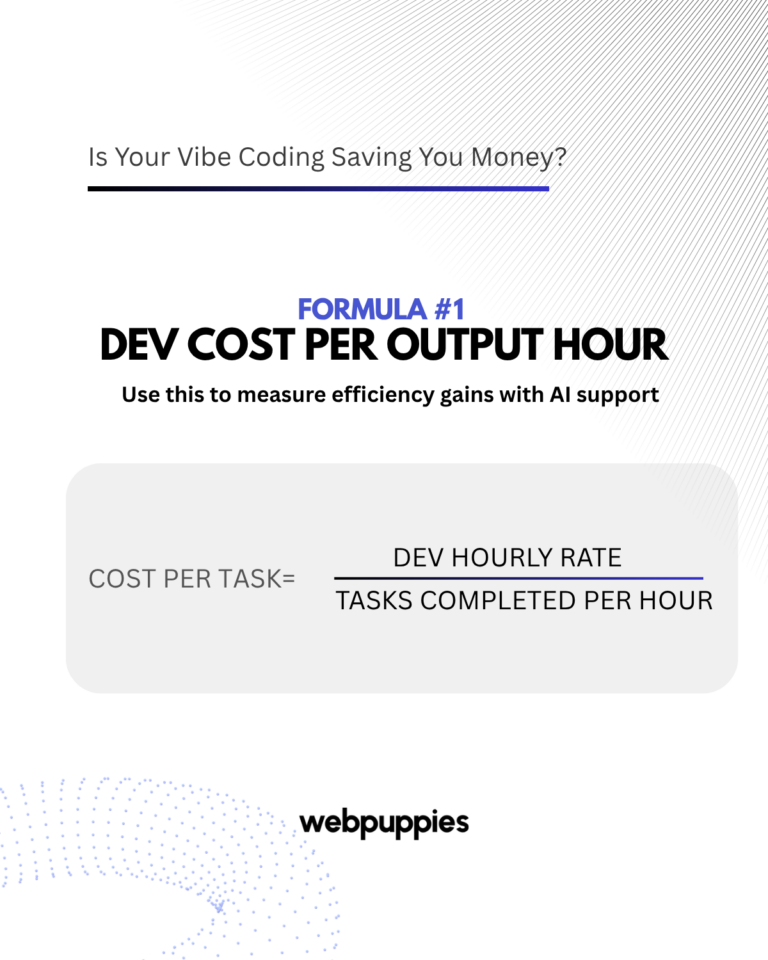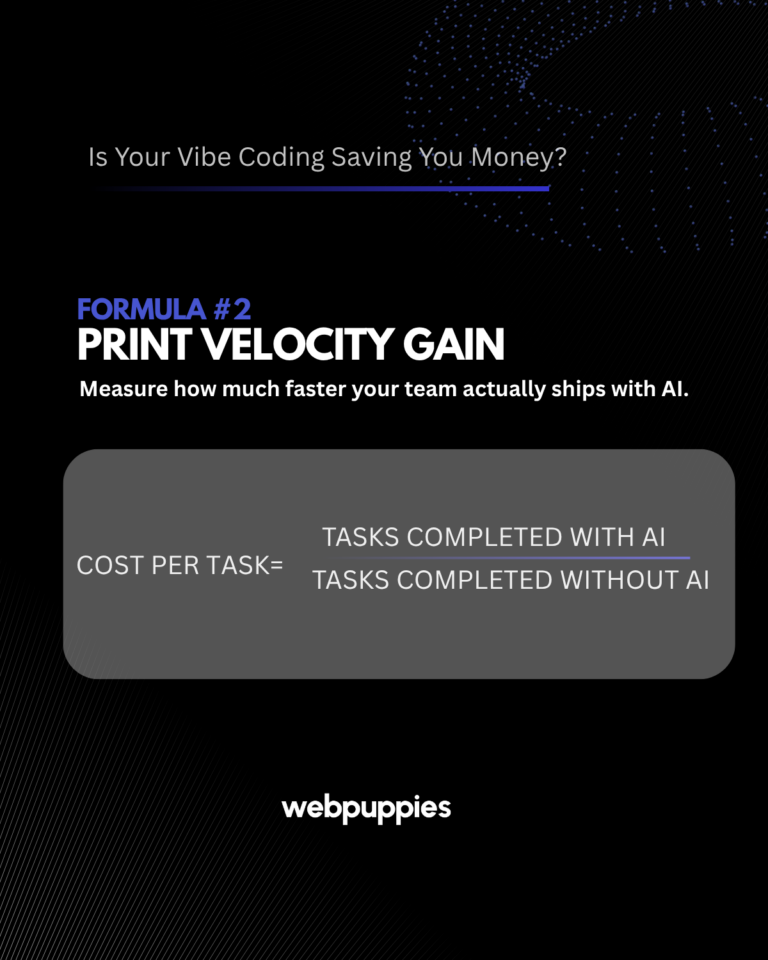All you need is an idea and a basic grasp of how to steer a language model. Vibe coding does the heavy lifting. This blog shows you where it shines, where it fails, and how to tell the difference before your sprint burns.
What Vibe Coding Actually Is (And Why It Matters Now)
Vibe coding is AI-assisted development where you prompt with intent, and working code shows up.
Think of it as pseudo-coding with an intern that doesn’t sleep. And unlike low-code platforms that abstract things away, vibe coding still touches the core codebase. You’re still in control. You’re just getting a serious head start.
It matters now because:
- Teams are shipping faster than they can maintain.
- Backlogs are bloated with low-priority tasks.
- Internal tools are underbuilt but overused.
If you can make AI generate boilerplate, structure APIs, or scaffold logic while your devs focus on edge cases and architecture, that’s leverage. But only if you know it’s working.
For more on scaling smart without starting from scratch, read our guide on how to scale without rebuilding your platform.
The Math That Matters: Cost & Velocity
Vibe coding sounds great in theory. You’ve seen the demos, maybe even played with it yourself. But if you’re leading a tech team, the question isn’t “can it code”. . .it’s “should we use it?” Don’t fire your devs just yet. If you’re trying to cut sprint drag without cutting corners, here’s the math that actually matters:
1. Cost Per Task
Formula: Dev hourly rate / Tasks per hour
Hypothetical Scenario:
- $100/hr developer
- 2 tasks/hr → $50/task
- With AI: 3 tasks/hr → $33.33/task
Illustrative Outcome: 33% efficiency gain.
This framework forces you to look past abstract metrics like story points or estimates. It ties productivity to something tangible: completed, working code. If you’re moving fast but don’t know your cost per task, you’re likely overpaying for throughput you can’t measure. Start tracking this metric across sprints to see where AI genuinely helps and where it’s just noise.
2. Sprint Velocity Gain
Formula: Tasks with AI / Tasks without AI
Hypothetical Scenario:
- 50 tasks normally
- 65 tasks with AI
Illustrative Outcome: Sprint velocity = +30%
Use this to track trends across sprints. Just remember to think of it as a compass, not a scoreboard. Are more tasks actually getting closed without ballooning effort or bugs? Are devs spending less time on boilerplate and more on high-impact work? If the numbers hold steady or improve, vibe coding is earning its keep. If not, it may be adding complexity without value.
Where Vibe Coding Works (And Where It Absolutely Doesn’t)
Not all code is created equal, and neither is AI’s ability to write it. Knowing where vibe coding fits in your workflow is the difference between boosting velocity and creating cleanup work. Here’s a breakdown to help you filter hype from reality before you hand over another prompt.
🟢 Use It For:
- Slack bots: These tend to follow predictable flows and interact with well-documented APIs. Perfect ground for AI to automate away the grunt work.
- CRUD APIs: Create, read, update, delete—repetitive and structurally consistent. Ideal territory for AI to draft working endpoints.
- Dashboards: Need to connect data sources, shape views, and display metrics? Let AI lay the groundwork, then tweak the logic.
- Internal tools: These tools often require speed over polish. Get the basic functionality up fast, test it with users, and refine it later.
- Data shaping scripts: AI handles JSON wrangling, CSV transforms, and API glue with minimal direction.
🔴 Avoid It For:
- Auth logic: Identity and access flows touch sensitive data and need airtight control. Generated code is too risky.
- Payment flows: Precision, regulation, and audit requirements make this a hard no for anything AI-generated.
- Regulated workflows: Compliance-heavy sectors (health, finance, legal) demand full traceability—AI code doesn’t offer that.
- Domain-heavy logic: If the logic depends on tribal knowledge or nuanced context, AI will hallucinate more than it helps.
It’s a multiplier when you control the edge. Not when precision, security, or compliance are non-negotiable.
Why This Isn’t Just Hype
You’re not betting on some sci-fi dream. This is happening now in real teams:
- One fintech team cut sprint durations by 25% by using AI to scaffold internal admin portals.
- A product ops team built five Slack automations in a week that used to take three sprints.
They didn’t “replace developers.” They just stopped wasting them on glue code.
The key is that they measured the delta.
FAQs
Is vibe coding for everyone?
No. If your team doesn’t review generated code or doesn’t know what good looks like, you’re just shipping junk…but faster.
Can AI-generated code be trusted?
Trust but verify. Our tip is to always use it as scaffolding, not treat as gospel. Everything still needs linting, testing, and review.
What tools enable vibe coding?
- GitHub Copilot
- Cursor.sh
- CodeWhisperer
- Claude or ChatGPT with IDE integration
How should a team adopt it?
Start with low-risk, high-volume tasks. Track baseline velocity. Measure output. Review relentlessly. And if you’re unsure where to start, user journey mapping can help you find the right flows to automate first.
Final Thought: If You Can Measure It, You Can Lead With It
One thing we tell every engineering lead: you can’t improve what you don’t measure
Vibe coding isn’t magic. It’s a tool that amplifies what you already measure and manage. When used right, it frees up your best developers to focus on architecture instead of boilerplate. But it only works if you’re tracking meaningful output like cost per task or sprint velocity.
If you’re not measuring? Skip it. If you are? It might just become your team’s unfair advantage.
Want to know which parts of your platform are AI-ready? Book a consult with Webpuppies. We help engineering teams get measurable gains from automation without breaking what already works.



